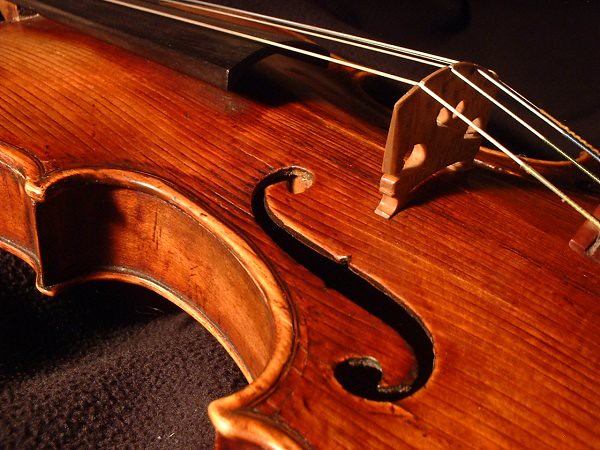From Guts to Steel: The Story of Violin Strings

“Violin — closeup” by pellaea is licensed under CC BY 2.0
It all started with sheep guts.
300 years ago, the first strings for bowed instruments were made from sheep intestines. After being artfully crafted, stretched, dried, and twisted, these strings made gorgeous, resonant sounds. These intestine strings all had certain characteristics – they had to be thick enough for the player to control their dynamics, but malleable so the string could vibrate easily.

Harmonics were also a consideration when strings were made. A harmonic is played when your finger is only touching the string slightly, not pressing all the way down. If strings didn’t have the proper mass, the harmonics wouldn’t be in tune. Nowadays, gut strings are still used, although steel strings have become much more popular. Gut strings are usually used among more professional or advanced musicians, since they are more fragile and break down easily.
In the future, many things will become “robotized”. However, the crafting of strings is best done by trained instrument makers. The authenticity of a string can have a major impact on the sound it produces, and the strings may take much more time to “break in” once placed on an instrument.
Overall, strings had many changes from the time they were first made. The next time you see or play a string instrument, think about all the years of transformation it went through, and how it was made.
That, my friend, is the story of the strings on bowed instruments.










